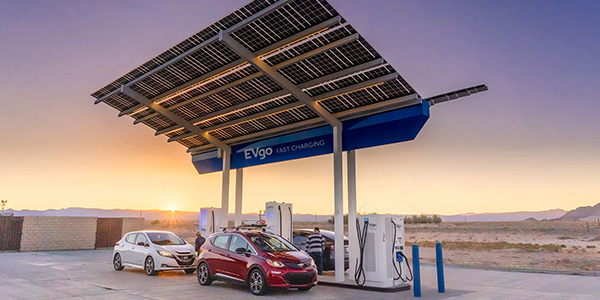The media spotlight in 2021 on electric vehicles has been intense thanks to multibillion-dollar investment announcements from General Motors and Ford, and President Joe Biden’s plan to convert the federal fleet to EVs. However, state utility regulators say unlocking the technology’s potential is going to take some work.
Speaking at the National Association of Regulatory Utility Commissioners’ (NARUC) Winter Policy Summit, regulators said that the media has hyped EVs before and that the public has qualms about the technology’s cost and reliability, which need to be addressed. Bob Gordon, a member of the New Jersey Board of Public Utilities, outlined the industry’s daunting challenges in a panel discussion Feb. 9.
“State utility regulators are wrestling with some very tough issues, such as are public incentives needed to advance electrification, and if so, how should it be done, and who should pay for it?” Gordon said. “Should the incentives be designed to promote vehicle sales or the development of charging infrastructure? What are the respective roles of utilities and private investors? How should we address equity concerns? And what is the appropriate role of the federal government as opposed to the states?”
Patchwork of 50 Laws
EV industry challenges include a confusing and often contradictory patchwork of state laws that govern automakers.
For instance, more than a dozen states accept California’s emissions standards, which are stricter than the EPA’s because the Golden State’s air pollution is the worst in the country. California and Massachusetts recently announced bans on new gasoline-powered vehicle sales beginning in 2035. New Jersey has set a goal of eliminating internal combustion vehicles by 2035, though it has stopped short of a formal prohibition.
“A patchwork certainly makes things much more difficult,” said Dan Bowerson, director of environment and energy at the Alliance for Automotive Innovation. “We’ve seen a lot of areas where mandates don’t necessarily make markets.”
Tesla and Uber recently joined forces with smaller rivals including Rivian and Lucid Motors to form a trade group, the Zero Emission Transportation Association, which is targeting 2030 for 100% of new car sales to be electric.
The 2030 goal is “something we think from a raw materials perspective, a consumer perspective and a technology perspective is achievable,” said Tesla Senior Global Policy Director Rohan Patel.
Automakers Seek to Make the Leap
Automakers currently make about 40 EV models. In five years, they will offer 130 EVs, making up 1% of all vehicles on the road, according to Bowerson. Dismissed by automakers for years, EVs are now seen as vital in fighting climate change.
Even so, the technology remains a tough sell to many consumers.
“So, that leaves traditional auto manufacturers, such as Ford and G.M., trying to figure out how to make this leap before the government mandates electric vehicles [or] they have their lunch eaten by companies like Tesla,” Chairman Jason Stanek of the Maryland Public Service Commission said.
Utilities have an integral role in promoting EVs.
For instance, Baltimore Gas and Electric provides calculators on its website to enable consumers to compare the costs of fueling a conventional vehicle to powering an EV. It also provides information on the environmental benefits of EVs and offers special electric rates to EV owners.
“Often when a customer purchases an electric vehicle, they’re looking to their utility for information on when it’s best to charge and are there any special rates available to them,” said Kristy Fleischmann Groncki, manager of strategic programs at BGE. “They ask questions about how to have a charging station [installed].”
Charging Network Challenges
Still, more work is needed to establish a charging network that is extensive enough to combat “range anxiety,” the fear that an EV will run out of power. Royal Dutch Shell’s plan to up its global EV charging network from 60,000 chargers to 500,000 by 2025 reflects the goal of making vehicle charging as convenient as filling up at the gas station.
The industry is also facing legal issues, such as the decades-old federal law that prevents thousands of rest stops on federal highways from offering charging for EVs.
Tesla is developing a charging network though it loses money on the service, Patel said.
“I don’t know of a good business case for charging infrastructure, period, let alone, charging infrastructure in places that have low utilization,” he said. “We’re investing a ton of money into those charging stations because we know that that’s the way to drive vehicle sales growth.”





